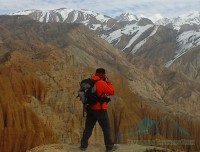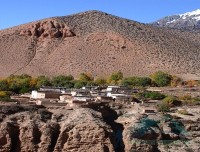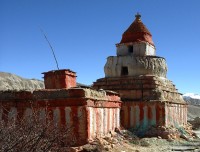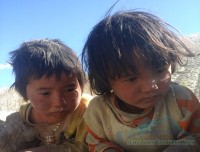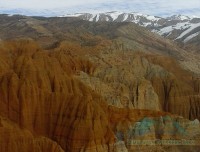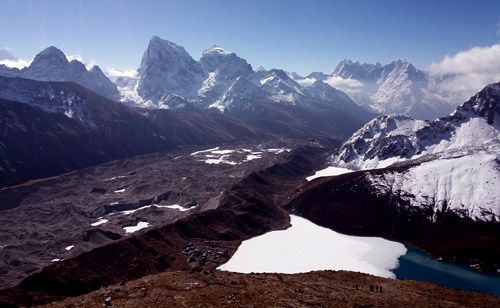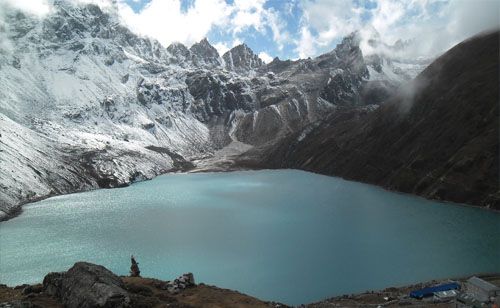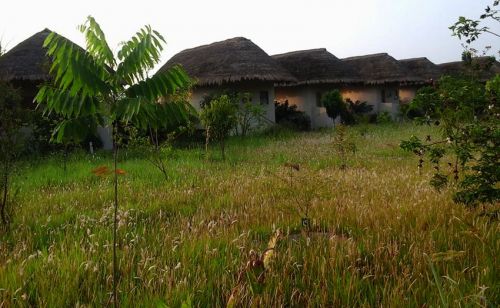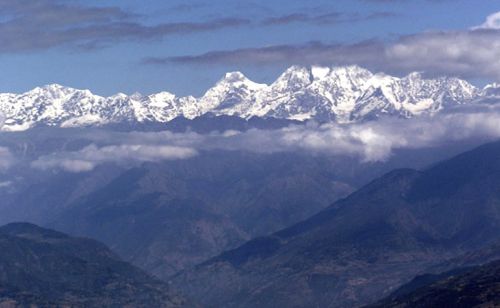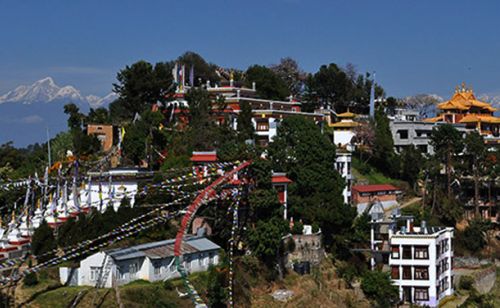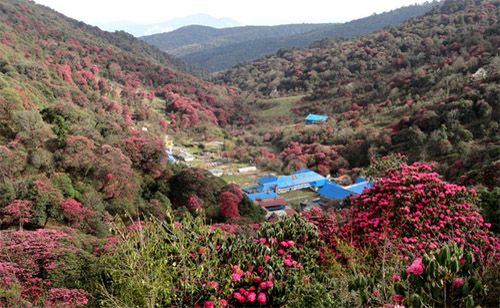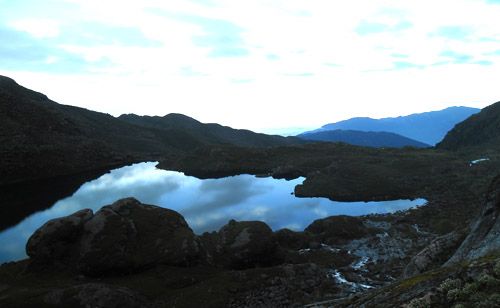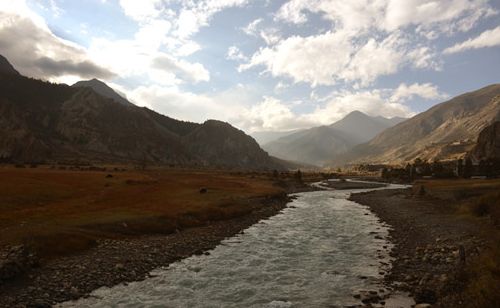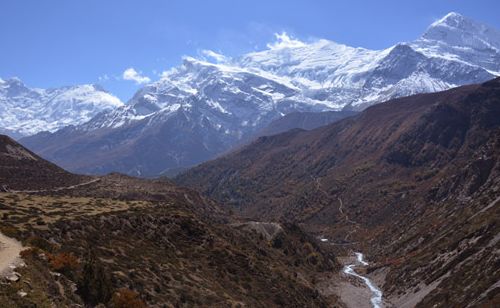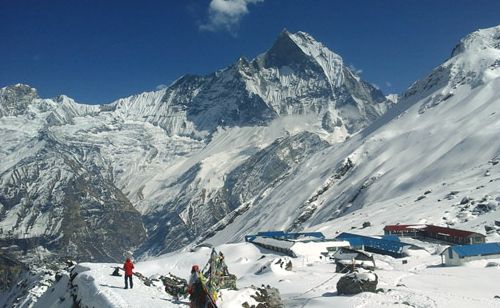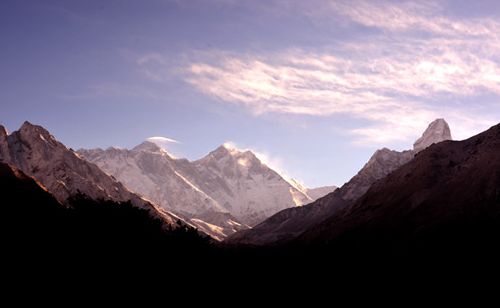Upper Mustang Trek- 16 Days
Trip cost start from: US$ 1865
Trip Destination:Nepal
Total Duration:16 Days
Difficulty:Moderate
Trekking Day:11
Nature :At guesthouse & hotel
Best Season:March - Nov.
Max. Altitude :4200 m.
Show AllGlimpse of this trip:
- Amazing view of the Annapurna & Dhaulagiri Himalayan Range
- Buddhist religion & traditional Tibetan lifestyle
- Travel along with the Kaligandaki River
- Lots of ancient Buddhist monastery, cave & troglodyte
- Famous Hindu temple Muktinath
- Strange & incredible colorful sandy landscape
Upper Mustang trek is the most interesting & beautiful in Nepal. Which offer us worm welcome with amazing, mysterious & historical places including snow covered mountains where you can have wonderful experience with Nepalese cultures, their lifestyle and hospitality. During your trip you will have many more opportunities to observe scenic beauty of Annapurna and Dhaulagiri Himalayan Range. Attractive landscape with tall pointed sandy rocks with variety of colors looks as if they are painted by a skillful painter. It makes your trip far better, wonderful, amazing and memorable throughout your life. Your heart may feel with peace, happiness and excitement. Beside this naturel beauty amazing Buddhist culture and traditional lifestyle of the villagers add one more break in your trip.
The trek begins after flight from Kathamndu to Jomsom via Pokhara. If you are interested to travel by vehicle there is available local bus & jeep. Our journey starts from Jomsom to Lo Manthang through the many villages with popular and wonderful places historically, culturally & geographically. Lo Manthang (3800 m) is the highest elevation of this trip is as a capital of Upper Mustang.
Google Map
View on google map
Detail Itinerary
Day 01Arrival in Kathmandu airport and transfer to hotel along with trek preparation.Upon your arrival at Kathmandu International Airport, you will be welcomed by a representative from Circuit Nepal Trek & Expedition and you will be transferred to your hotel. Then late in the evening our guide will meet you at a Nepali restaurant with a traditional meal and have a talk about the trip.
Day 02Trekking permit preparation day in Kathmandu.After the arrival and a stay at hotel for a night before proceeding to our trek we take a day off for trek preparation and making the permit papers with all the documentations needed. This day you can either relax back at the hotel or can do some sightseeing of the Kathmandu valley. Then again we stay overnight at the hotel.
Day 03Flight from Kathmandu to Pokhara (850m) and free day in Pokhara. Overnight at hotel.We fly from Kathmandu to Pokhara by domestic airline, it takes about 25 minutes. Pokhara is city of lakes it offers a superb views of Annapurna Range including, Mt. Dhaulagiri, Mt. Manaslu, Mt. Machhapuchhre (Fish tail) and others. We can explore the beautiful nature of the place, caves, temples, museum and lakes and even do boating.
Day 04Fly from Pokhara to Jomsom (2700m) & trek to Kagbeni (2858m) 35 minutes flight & 3/ hrs trek. Overnight at guesthouse. An early morning we transfer take a flight to Jomsom, the district headquarter of Mustang and after reaching there we head towards Kagbeni. The trail follows the right bank of the Kaligandaki River and crosses several side tributaries, mostly crossed by simple bridges and reach Ekley-bhatti village (2740 m). Then after about a hour walk we reach Kagbeni, an interesting windswept villages situated on the main age old Trans Himalayan salt trade route to Tibet via Upper Mustang area. Overnight at guesthouse.
Day 05Trek from Kagbeni to Chele (3050m) 5/ 6 hrs trek. Overnight at guesthouse. Our trek starts with a special permit check up and onwards to the riverbank of Kaligandaki up stream. This trail follows the up and downhill to the east bank of the Kaligandaki that climbs over many ridges as it heads north and reaches Tangbe village and we ascend to the village of Chele. Overnight at guesthouse.
Day 06Trek from Chele to Syangboche (3475m) 6/ 7 hrs trek. Overnight at guesthouse. The trek heads up to steeply up till to Taklam La Pass (3,624m) with great view of Yakawa, Tilicho Peak and Damodar Danda, eroded canyons, remarkable chortens and little descend to Samar. Another 3 hrs of walk takes us to Syangboche. On the way, we relax along the surrounding of cool streams and juniper trees. We also pass by a cave famously known as Ramchung Cave. Overnight at guesthouse.
Day 07Trek from Syangboche to Ghaymi (3520m) 4/5 hrs trek. Overnight at guesthouse. We trek uphill to the Yamda La (3,850m) and passing few teahouses, chorten and local we head to Nyi La (4,010m). Nyi La Pass is the highest point of the trek thus far and the southern boundary of Lo and then we descend to Ghaymi. Overnight at guesthouse.
Day 08Trek from Ghaymi to Charang (3500m) 4/ 5 hrs trek. Overnight at guesthouse. We continue our trek with a pleasant walk and after crossing Ghaymi Khola, the trail climbs to a plateau and passes beside a very long Mani wall (a sacred stone wall made by the followers Buddhism). From the end of the wall the trail heads east to the village of Charang with a maze of fields, willow trees and houses separated by stone walls at the top of the Tsarang Chu canyon. There is also a huge white dzong and red Gompa to get to our teahouse for tonight's stop. Overnight at guesthouse.
Day 09Trek from Charang to Lo-Mangthang (3700m) 3/4 hrs trek. Overnight at guesthouse. We leave the Charang Khola and climb the ridge to 3,850m windy pass of Lo for our first view of the walled city of Lo Manthang. The trail drops to a stream and then climbs onto the plateau where the city is situated. The only gate is in the north east corner and we make our way to the entrance. The white washed walls enclose around 150 homes, Gompa and a palace. Overnight at guesthouse.
Day 10Exploration day in Lo-Manthang.This day will have full day to explore the surrounding area and know about this historic place. And, after some surveys and round trip to the city, we get back and stay at the guest house.
Day 11Trek from Lo-Manthang to Ghami (3810m) 5/ 6 hrs trek. Overnight at guesthouse. After a wonderful time at Lo-Manthang we will trek back to Ghami which is also interesting place to explore the local area .Climbing the ridge, we get our last view of the walled city and descend the valley towards Ghami. During the walk you will suffer the dusty wind and as suggested to walk in the morning. Overnight at guesthouse.
Day 12Trek from Ghami to Samar (3806m) 5/6 hrs trek. Overnight at guesthouse. Trek from Ghami to Samar, we continue down the valley to Samar as our journey for our overnight stay. Overnight at guesthouse.
Day 13Trek from Samar to Kagbeni (3050m) 5/6 hrs trek. Overnight at guesthouse. We continue descending down the valley to Kagbeni having wonderful scenery during the journey of the Himalayan view along with dry highlands. Overnight at guesthouse.
Day 14Trek from Kagbeni to Jomsom (2700m) 3/4 hrs trek. Overnight at guesthouse. This will be our last day of the trek and walk. After reaching to Jomsom we will celebrate the achievements of the trek with the crew and reflect on our journey. Overnight at guesthouse.
Day 15Fly from Jomsom to Pokhara-Kathmandu. Overnight at hotel.After breakfast we take a flight to Pokhara and after reaching Pokhara we take again a flight to back to Kathmandu in the same day. Overnight at hotel.
Day 16Transfer to airport according to your international flight schedule. Our agency representatives will escort you to the airport for your connecting flight home.
Cost Include
- All additional government tax.
- Airport picks and drops by private vehicle.
- Accommodation in guest house during trekking.
- Welcome and farewell dinner in Kathmandu at typical Nepali restaurant.
- Accommodation in Kathmandu (3 nights) and Pokhara (1 nights) with B & B system.
- Accommodation, food, drinks, salary, insurance, transportation of Nepali trekking staff.
- An experienced government licensed trekking guide and porter (1 porter for 2 trekkers).
- Domestic airfare for Kathmandu-Pokhara-Jomsosm both way.
- Special trekking permit US$ 500 per person for 10 days (the above price includes 10 days valid trekking permit from Kagbeni to Kagbeni. If you would wish to stay more than 10 days in restricted area, you are subjected to extra charge for extra days (US$ 50 per day / per person).
Cost Exclude
- International air fare.
- Lunch and dinner in Kathmandu & Pokhara.
- Your travel insurance (Compulsory).
- Tips to guide and porter and all kind of Drinks.
- Nepal entry visa fee (U$ 40 for 30 days from date of issue).
- Bar bills, telephone bills and other personal expenses (shopping, laundry & shower).
- All expenses due to sudden events e.g. flight cancellation, personal illness, strike etc.
Approximately Individual Expenditure on the Spot
- Lunch or dinner in Kathmandu & Pokhara (10- 15 US$) per item
- Mineral water per bottle (1-3 US$)
- Hot shower (1-3 US$)
Trip Info
Accommodation: We provide wide range of accommodation service for traveller as per there request from 5 star hotel to normal guest house in main city areas where available, while the price of the trip might alter on that basis. Mustang region is destination for wide range of trekking route and packages, good quality of accommodation options are available there.
Food /Meals: Cities areas in Nepal offer excellent and variety of food and cuisines as it has many hotels and restaurants. National/International food, Local food, cultural food, fast food, dessert items, snacks etc are easily available in cities areas. While in case of remote areas one can enjoy Local food grown and prepared. Mustang Region is famous for trekking and travelling, food of good quality are available but option and variety might be less in compared to main cities area.
Drinking Water: We highly advise to minimize use of plastic during the trek. Please always remember that there is no any plastic recycle facilities up in the Mountains. In this regard we highly recommend you to use boiled water for drinking or use water purification tables instead of buying water in plastic bottles. Your Trekking Guide will suggest you the best and most ecological friendly way for drinking water during a trek depending on a trek area. We advise to have your own water bottle with you for the whole trek which you can refill at the lodge/camp-site in the evening and morning or at lunch break on the way.
Best Season: As what one can see highly depend upon the seasonal condition, it is always best to travel on the best season for the corresponding trek. It not that on season other than the best one, the trek gets worse, but one can fully take advantage of the trek when done in best season. The best season for this trek is Mar-April/Sep-May. This trek can be done throughout the year.
Expert Team: Working your way through dangerous mountainous route can be very challenging and overwhelming. One can encounter stamina, high altitude, weather condition, steeply and slippery path way while travelling depending upon the route one choose. So leading the trip despite of all the challenges requires experienced and expert people who are directly under our care. They are properly trained and government certified individual who are very capable and knowledgeable to work out through extreme condition and lead you safely. All of our staff are provided with insurance, medical services and equipment as their safety is something we do not take lightly.
Equipment and Travel Packing Ideas: It is our utmost belief that carrying appropriate and proper equipment is better than carrying excessive quantity of equipment. So one should only carry appropriate and only absolute necessary equipment with them. Warm clothes, trouser, t-shirts, hiking boots, sunglasses, sun cream, knife, walking stick, backpack, headlight, sleeping bags are among the essential stuff one requires. Equipment we provide are limited so, one should carry required equipment by them or it can be bought in any appropriate places.
Clothing: Liner socks, Trekking shirts short sleeve, Thermal underwear, fleece sweaters lightweight, one heavier Easy drying long sleeved base layer shirts, woolen blends trekking socks, pair trekking pants with zip off bottoms, down vest, wind/rain proof over layer - jacket and pants, peak hat, headband, Warm winter hat, lightweight thermal layer hat, pair gloves, down jacket, Pair trekking boots, pair down booties Great for keeping feet warm in room and while sleeping and for in the lodge. In case if you decide to join the trek with us, do enquiry about clothing requirement before leaving as there might be slight changes in requirement depending on season and travelling date.
Safety and Security: Safety and security of traveller and team staff is matter of great concern to us. Selection of proper route, highly trained professional team and equipment required is done with great care and knowledge. We have proper remedial services during the trek with professional staffs; first aid kit, oxygen bag and helicopter service for emergency rescue whenever trekkers get physical loss or altitude sickness.
Experience and Fitness: Though high level of fitness and previous experience is not needed for trekking in this reason but food stamina, workout and running and walking habit helps to higher extent. Walking trough rocky steeply path way can be challenging but with appropriate rest and walking habit, one can complete their journey with no regret left behind.
Acclimatization: Acclimatization is important for the trekking above 3500m. Our trekking schedules have been carefully designed to maximize your ability to acclimatize safely. We ascend slowly and ensure an adequate number of rest days. However, it is still possible for mountain sickness and your tour leader will be watching for symptoms with an experienced eye throughout the trip. These symptoms are commonly headache, nausea, lethargy and sometime breathlessness. If you or any of the group members display any of these symptoms he will be able to provide informed advice and ensure a proper course of action. Your tour leader will advise you more thoroughly regarding the altitude and most of the problems prior to starting on trail.
Equipment List
| Trekking Equipments List
Trekking is simply walking in the hills or the mountains, be it for a day or weeks or more. Certain basic trekking equipment is essential while you're trekking to any parts of the trekking destinations in Nepal. The items may differ from the area to area and on season to season. The following are the list of the equipment that we suggest you for your trekking in Nepal Himalaya. Clothing:
Equipment's and Accessories:
Medical:
Details of Trekking Equipment's:
|
Trip Note
The itinerary above is just one of our many programs. Most of our programs can be customized to suit your time convenience. So, Just let us know and we could discuss your needs in order to give you the holidays of your life time. If you wish to add any other programs to the trek above, you neednt worry about the cost because we are aware of how much you have spent & we could give you prices for our added programs that are pocket friendly.
Enquiry
Useful Info
related Trips
YOU MAY LIKE THIS
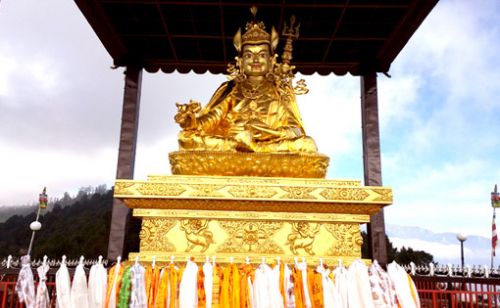
Helambu Trek- 8 Days
8 Days
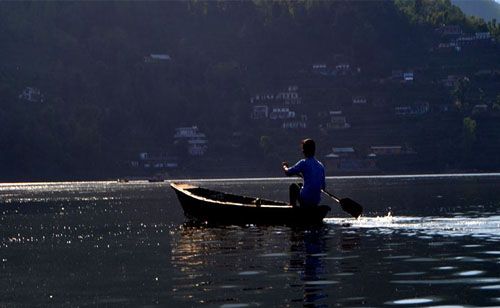
Pokhara Tour
05 Days
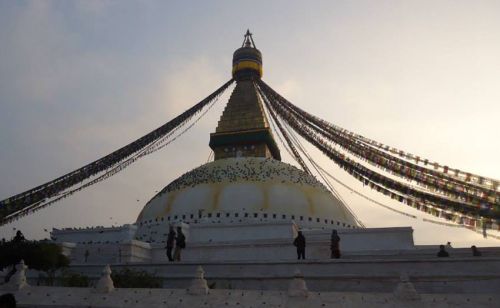
Kathmandu Valley Tour
04 Days
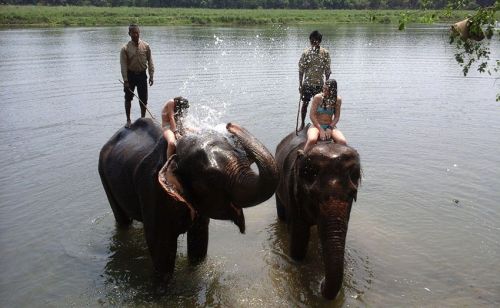
Kathmandu Chitwan Tour
05 Days
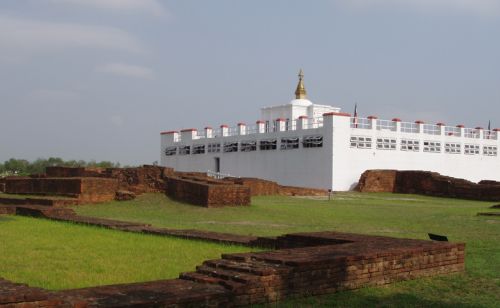
Kathmandu Lumbini Tour
07 Days
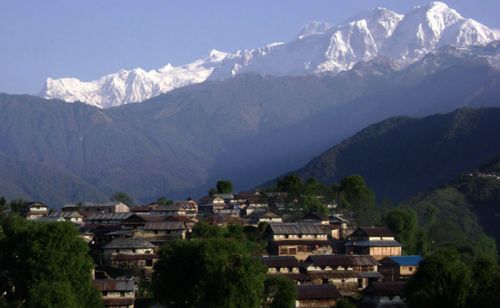
Ghale Gaun Trek
10 Days
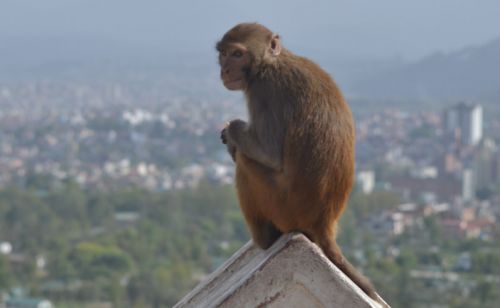
Around the Kathmandu valley Trek
06 Days
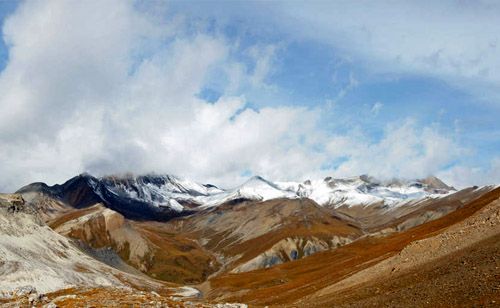
Upper Dolpo Trek
28 Days
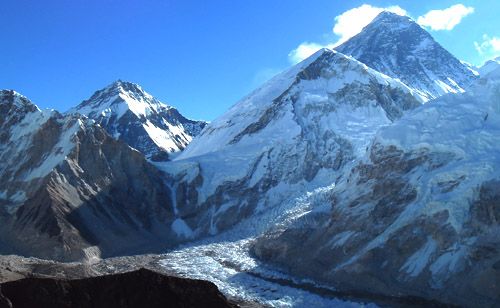
Everest Base Camp Trek- 11 Days
11 Days
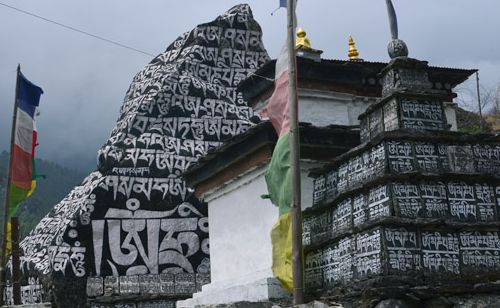
Sherpa Culture Trek- 15 Days
15 Days
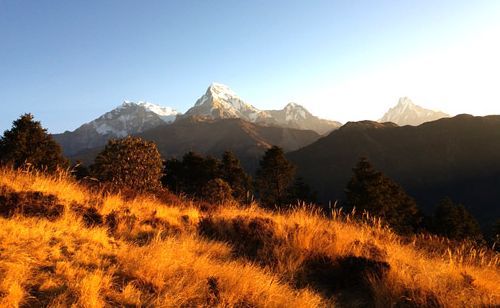
Poon Hill Trek- 6 Days
6 Days
.jpg)
